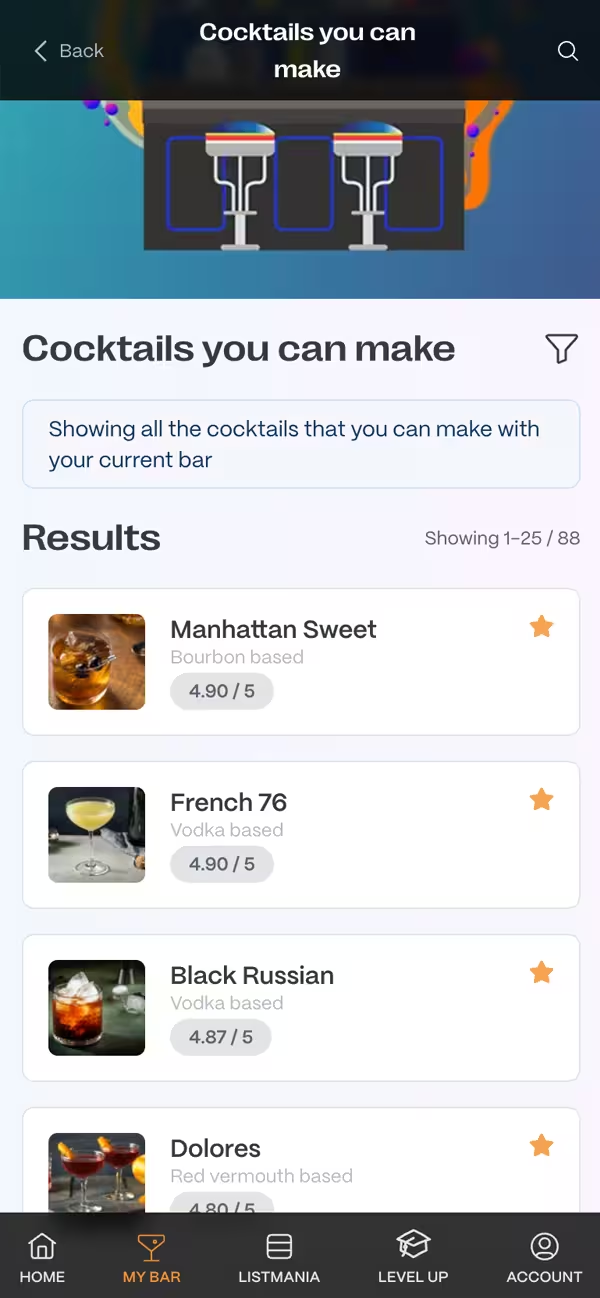Champagne / prosecco
With Champagne / prosecco you can make
French 76
Prince of Wales
Negroni Sbagliato Pitcher
Crack Baby
Limoncello Spritz
Pimped Up Prosecco
Flirtini
Death In The Afternoon
Champagne Snowball
Peach Bellini
We've got 144 cocktails that can be made with Champagne / prosecco.
Find out what to make with Champagne / prosecco
Q&A
What is the history and origin of Champagne and Prosecco?
Champagne boasts a rich history, originating from the Champagne region in France. It's a product of accidental fermentation in the bottle, resulting in its signature effervescence. Monk Dom Pérignon is often credited with its invention in the 17th century, although this is more myth than fact. Prosecco, named after a village, springs from Northeastern Italy and has roots going back to Roman times. Modern Prosecco, however, gained prominence in the 20th century with the adoption of the Charmat method, enhancing its fruity and floral characteristics. Each sparkling wine reflects its unique terroir and centuries of refinement, embodying the culture and tradition of its region.
Can Prosecco be used as a substitute for Champagne in cocktails?
Yes, Prosecco can often be used as a substitute for Champagne in cocktails, creating a slightly different yet delightful experience. While Champagne is known for its fine bubbles and complex flavor profile, Prosecco offers a fruitier and somewhat sweeter taste. This can add a new dimension to classic cocktails like the Mimosa or the Bellini, where Prosecco's lighter, more approachable character might be preferred. However, it's important to consider the overall flavor balance of the cocktail, as some recipes may specifically benefit from Champagne's unique characteristics.
What is the best temperature to serve Champagne and Prosecco in cocktails?
Both Champagne and Prosecco are best served chilled in cocktails, typically between 6°C to 8°C (43°F to 46°F). This temperature range highlights their crispness, effervescence, and flavor profiles, making the cocktail experience more refreshing and enjoyable. It's ideal to chill the bottle in the fridge for at least a couple of hours or in an ice bucket with a mix of water and ice for about 30 minutes before serving. Remember not to freeze these wines, as extreme cold can dull their flavors and aromas.
How should Champagne and Prosecco be added to cocktails to preserve effervescence?
To preserve the effervescence of Champagne and Prosecco when adding them to cocktails, it's crucial to pour them gently. Start by adding other cocktail ingredients to the glass first, then slowly top with Champagne or Prosecco to avoid agitating the bubbles more than necessary. Using a chilled flute or coupe glass can also help maintain the bubbles. For layered cocktails, carefully pouring the sparkling wine over the back of a spoon can reduce agitation, preserving the fizz and ensuring a visually appealing presentation.
What is the cultural significance of Champagne and Prosecco in celebrations?
Champagne and Prosecco hold a special place in celebrations around the world, symbolizing luxury, achievement, and joy. Champagne, with its deep roots in French heritage, is synonymous with prestige and is often associated with significant occasions such as weddings, anniversaries, and New Year's Eve celebrations. Prosecco, while lighter and more approachable, carries Italian traditions of la dolce vita, evoking feelings of happiness and sociability. Both sparkling wines are essential toasts to life's memorable moments, embodying the spirit of celebration and the desire for quality and elegance.
Champagne / prosecco Brands
How it works
Easily create your bar from the ingredients you have at home, and we'll show you what you can make with the ingredients you have to hand.
Once you've added this ingredient head to your My bar page and fill up everything else you have.
We'll also show you cocktails that can make by substituting what you have for one of the ingredients you don't, riffing on the original. Now go forth and create something delicious!




